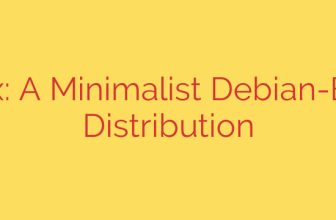
Mastering the GenAI Stack: Your Comprehensive Guide to Building Powerful AI Applications
The world of generative AI is moving at lightning speed. While groundbreaking models capture headlines, the real work of building robust, scalable, and secure AI applications happens in the technology stack. Understanding and mastering this “GenAI stack” is no longer optional—it’s the critical differentiator between a simple prototype and a production-ready solution that delivers real business value.
This guide breaks down the essential components of the modern generative AI stack, explaining why each layer is crucial for success and how they work together to power the next generation of intelligent applications.
What Exactly is a GenAI Stack?
Think of a GenAI stack as the complete set of tools, technologies, and infrastructure required to build, deploy, and maintain a generative AI application. Just as a web developer needs a stack (like LAMP or MERN), an AI developer needs a specialized set of components to handle everything from data processing and model interaction to user-facing interfaces.
A well-architected stack ensures your application is efficient, scalable, and secure. A poorly chosen one leads to performance bottlenecks, high operational costs, and potential vulnerabilities.
The Key Components of the Modern GenAI Stack
The GenAI stack can be broken down into several distinct but interconnected layers. Let’s explore the architectural backbone of today’s most powerful AI systems.
1. The Foundation: Data and Infrastructure
Everything in AI begins with data. This foundational layer is about preparing, storing, and accessing the information your AI model will use.
- Cloud Platforms: Services like AWS, Google Cloud, and Azure provide the essential compute power, storage, and networking required to run demanding AI workloads.
- Vector Databases: This is a critical innovation for GenAI. Databases like Pinecone, Weaviate, and Chroma are specially designed to store and query high-dimensional data “embeddings.” This technology is the engine behind powerful techniques like Retrieval-Augmented Generation (RAG), which allows models to access and cite external knowledge, reducing hallucinations and providing up-to-date information.
- Data Pipelines: Robust systems for ingesting, cleaning, and transforming data are essential. This ensures the information fed to your model is accurate and relevant.
2. The Engine: Large Language Models (LLMs)
This is the core intelligence of your application. The choice of which model to use is one of the most significant architectural decisions you will make.
- Proprietary Models: These are powerful, pre-trained models offered as-a-service, such as OpenAI’s GPT series, Anthropic’s Claude, and Google’s Gemini. They offer state-of-the-art performance and are easy to integrate via APIs.
- Open-Source Models: Models like Meta’s Llama series or Mistral AI’s models offer greater flexibility, control, and cost-effectiveness. Hosting your own open-source model allows for deep customization and ensures your data remains within your own infrastructure, which is crucial for privacy and security.
3. The Framework: Application and Orchestration
This layer acts as the “glue” that connects your data, your model, and your application’s business logic.
- Development Frameworks: Tools like LangChain and LlamaIndex have become the de-facto standard for building LLM-powered applications. They provide modular components for creating “chains” or sequences of calls to LLMs, databases, and other APIs, simplifying the development of complex workflows.
- Orchestration Tools: As applications become more complex, tools are needed to manage prompts, evaluate model outputs, and monitor performance in a systematic way.
Why Mastering the Stack is Crucial for Success
A surface-level understanding of a single API is not enough. True mastery of the GenAI stack provides a significant competitive advantage.
- Cost Efficiency: Choosing the right model (e.g., a smaller open-source model vs. a large proprietary one) and the right database can dramatically reduce operational costs.
- Enhanced Performance: A well-configured RAG pipeline using an optimized vector database delivers faster, more accurate responses than a simple API call.
- Improved Security and Privacy: By understanding how to self-host models and manage data flow, you can build applications that meet strict compliance and data privacy requirements.
- Scalability: A properly designed stack is built for growth, ensuring your application can handle an increasing number of users and more complex tasks without failing.
Essential Security Tips for Your GenAI Stack
As you build, security cannot be an afterthought. Keep these critical points in mind:
- Guard Against Prompt Injection: This is a new class of vulnerability where malicious users can hijack the model’s instructions. Implement strict input validation and output sanitization.
- Secure Your Data at Rest and in Transit: Ensure all data, especially sensitive information passed to and from the model, is encrypted.
- Monitor and Audit Model Interactions: Keep detailed logs of prompts and responses. This is vital for debugging, identifying misuse, and ensuring your AI is behaving as expected.
Take the Next Step: The GenAI Stack Mastery Webinar
Reading about the stack is one thing; seeing it in action is another. To help developers, architects, and tech leaders navigate this complex landscape, we are pleased to announce an exclusive deep-dive webinar.
Join leading industry experts on September 24, 2025, at 3:30 PM for the GenAI Stack Mastery Webinar. This live, in-depth session is designed to provide actionable insights and practical knowledge you can apply immediately.
In this webinar, you will learn:
- How to choose the right LLM and vector database for your specific use case.
- Best practices for implementing a secure and efficient RAG architecture.
- Real-world case studies on deploying scalable GenAI applications.
- A forward-looking analysis of the tools and trends that will shape the future of AI development.
Building powerful generative AI is about more than just a clever prompt. It’s about thoughtful architecture, strategic tool selection, and a deep understanding of the technologies that bring it to life. Mastering the stack is your roadmap to building the future.
Source: https://www.simplilearn.com/master-genai-stack-with-the-applied-genai-specialization-webinar








